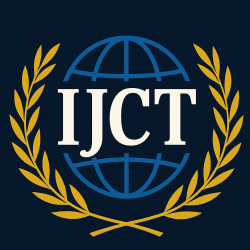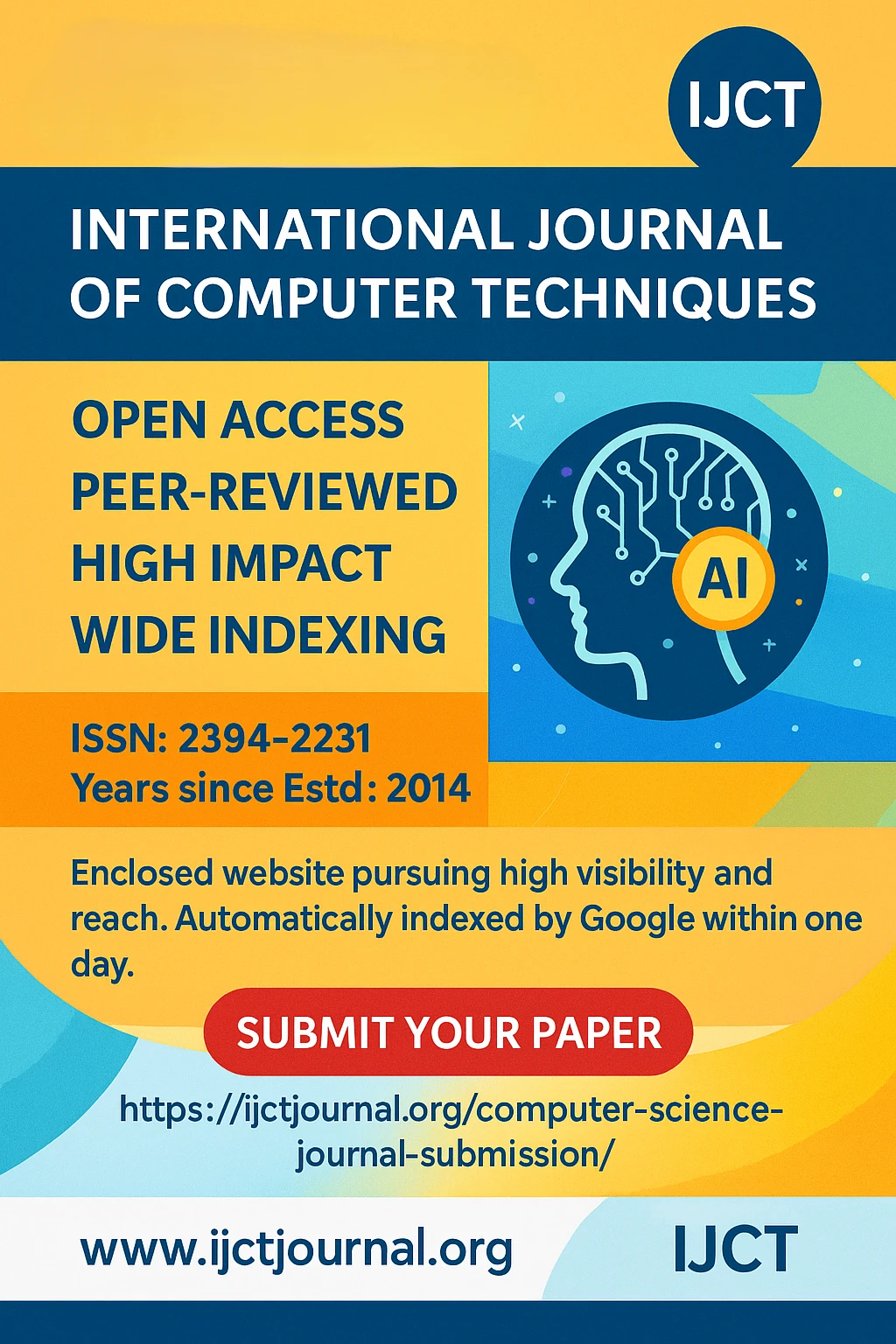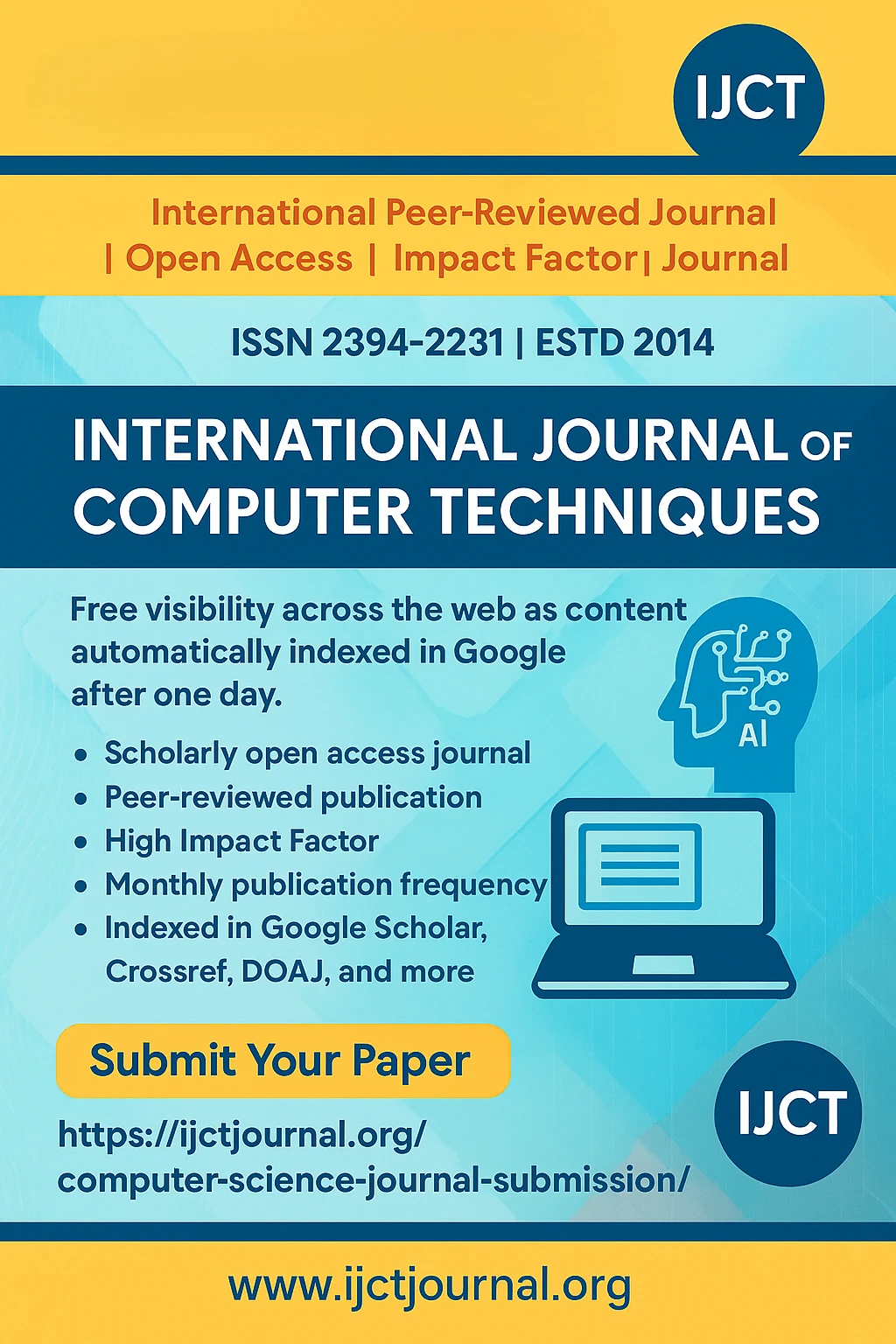
Optimizing of Side Lobe Level in Adaptive Smart Antennas used in 6G Mobile Communication | IJCT Volume 12 – Issue 5 | IJCT-V12I5P51

International Journal of Computer Techniques
ISSN 2394-2231
Volume 12, Issue 5 | Published: September – October 2025
Author
Dr. Rizwan Alad, Mr. YuvrajSingh Deora, Mr. Keyur Patel, Dr. Ashish Pandya
Table of Contents
ToggleAbstract
In the rapidly advancing domain of wireless communications, the performance of smart and
adaptive antennas is pivotal for improving signal quality and minimizing interference. A key
design challenge is the suppression of side lobes, which contribute to undesired radiation and
reduced system efficiency. This paper proposes an optimized amplitude excitation strategy
that systematically adjusts the amplitude distribution across antenna array elements to
achieve enhanced directional control while preserving high directivity and radiation
efficiency. By integrating advanced beamforming algorithms, the proposed method
effectively minimizes side lobe levels and improves the signal-to-noise ratio (SNR).
Simulation studies validate the approach, and experimental evaluation using a prototype
smart antenna system confirms its practical viability. The results highlight the critical role of
amplitude excitation in adaptive array design and establish a foundation for the development
of high-performance, interference-resilient antenna systems for 5G, satellite, and next-
generation wireless networks.
Keywords
Smart Antenna, Adaptive Array, Side Lobe Level (SLL), Direction of Arrival (DOA)Conclusion
This research presents an optimized amplitude excitation technique for side lobe suppression
in smart and adaptive antennas, addressing a critical challenge in modern wireless
communication systems. By systematically adjusting amplitude distributions across the
antenna elements using Chebyshev tapering, the proposed method achieves a significant
reduction in side lobe levels while maintaining high directivity and signal-to-noise ratio (SNR). Unlike conventional phase-only beamforming approaches, this method integrates
amplitude-phase control, leading to improved beam steering accuracy and interference
mitigation.
Simulation results confirm that the optimized radiation pattern effectively reduces unwanted
radiation, thereby enhancing spectral efficiency andreliability. Furthermore, experimental
validation using a prototype smart antenna system demonstrates the practical feasibility of
this approach in real-world applications, including 5G networks, satellite communications,
and radar systems. The study also highlights the impact of mutual coupling effects and
adaptive beamforming techniques, reinforcing the importance of precise excitation control in
phased arrays.
Overall, this research contributes to the development of high-performance, interference-
resistant antenna systems capable of meeting the demands of next-generation wireless
networks. Future work could explore machine learning-driven optimization, dynamic
adaptation for real-time applications, and integration with massive MIMO systems to further
enhance the adaptability and efficiency of smart antennas in complex wireless environments.
References
[1] Noor Hidayah Muhamad Adnan, Islam Md. Rafiqul, AHM Zahirul Alam;Effects of Inter-Element Spacing and Number of Elements on Planar Array Antenna Characteristics Vol. 10, No. 1, April 2018, pp. 230-240
[2] Jafar R. Mohammed* and Ahmed J. Abdulqader; Array Pattern Restoration under Defective Elements Vol. 123, pp.17–26, 2022
[3]Shun Na, Mengdi Guo, Yang Liu, Yinghui Zhang; Adaptive Beamforming Algorithms for Smart Antenna System 6th International Conference on Information Engineering for Mechanics and Materials (ICIMM 2016)
[4]Can Xiong, GaobiaoXiao ; A Diagnosing Method for Phased Antenna Array Element Excitation Amplitude and Phase Failures Using Random Binary Matrices Vol. 20, 2017
[5] Rameshwar Kawitkar and D G Wakde; Advances in smart antenna system Vol. 64, September 2005, pp.660-665
[6]Atef Z. Elsherbeni and Matthew J. Inman; Antenna Design and Radiation Pattern Visualization ACES JOURNAL, VOL. 18, NO. 4, NOVEMBER 2003
[7]Hong Jun Lim , Dong Hwan Lee , Hark Byeong Parkand Keum Cheol Hwang ; Near-Field-Based 5G Sub-6 GHz Array Antenna Diagnosis Using Transfer LearningVol.11, 2021
[8] BinduSharma,IndranilSarkar, Tanmoy Maity, P. P. Bhattacharya; An Introducation to Smart Antenna System Vol. 8 , Nov.2014
[9] Amin H. Al Kabi; Effect of Polarization on the Performance of Adaptive Antenna Arrays Vol. 15, No. 9, September 2020
[10] Yao Su, Zixuan Song, Shuai Zhangand ShuxiGong ; Determination of Excitation Amplitude and Phase for Wide-Band Phased Array Antenna Based on Spherical Wave Expansion and Mode Filtering Vol.11,2022
[11] Muhammad Ibrahim Khan ,
Muhammad Juanid Mughal, Rana Liaqat Ali ; Cosine Least Mean Square Algorithm for Adaptive Beamforming Vol.7 (3.16) (2018) pp.94-97
[12] Muhammad hashim dahri1, Mohd haizal jamaluddin1, (Member, IEEE), Mohsen khalily2, (Member, IEEE), Muhammad inam abbasi1, Raghuraman selvaraju1, and Muhammad ramlee kamarudin3, (Senior Member, IEEE) ; Polarization Diversity and Adaptive Beamsteering for 5G Reflectarrays: A Review Vol.6, 2018
[13] R. Evangilin Beulah, N.Aneera Vigneshwari; Design and Simulation of Smart Antenna Array Using Adaptive Beam forming Method Vol.3, Issue 6, November 2014
[14] Angeliki Alexiou, Bell Laboratories, Lucent Technologies Martin Haardt, Ilmenau University of Technology; Smart Antenna Technologies for Future Wireless Systems: Trends and Challenges Vol.04 ,2004
Journal Covers
IJCT Important Links
© 2025 International Journal of Computer Techniques (IJCT).











